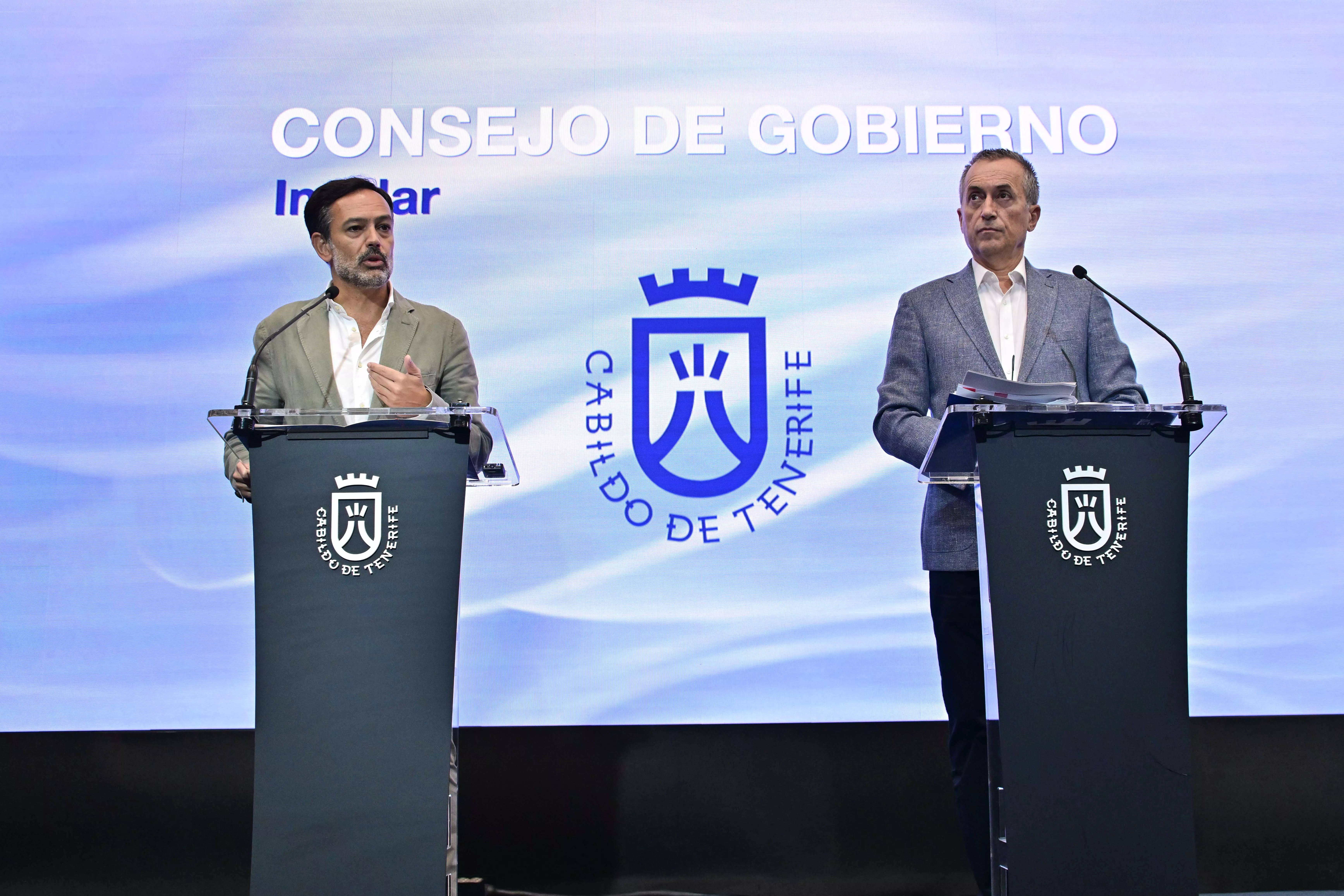The inhabitants of Tenerife are increasingly utilising public transport. The Island Council anticipates concluding this year with 80 million passengers, a statistic that would nearly double the previous administration’s user numbers.
Rosa Dávila, the president of the Cabildo of Tenerife, believes this surge is not mere chance but rather a transformation in the island’s mobility paradigm. “This rise in public transport usage underscores the mobility, transport, and environmental policy we have established through the Cabildo, and it adequately reflects how a new transport model is being implemented. Consequently, securing the commitment to uphold free public transport by 2025 is crucial.”
The mobility policy initiated by the Cabildo is centred around three essential pillars. The first is a definitive enhancement of public transport, aimed at increasing Titsa’s capacity. To realise this goal, the Tenerife public transport operator will introduce 250 new buses, primarily hybrid models, facilitating both fleet renewal and its sustainable growth.
This growth also equates to an increase in daily services. Titsa will implement an additional 500 daily trips, along with expanded services in Arona and Granadilla by 2025. To satisfy this demand, 300 new staff members will be hired over the next two years, further improving service frequency and coverage across the island.
Dávila stresses that this bus reinforcement aligns with the heightened demand from Tenerife’s residents. “Our aim is to provide the entire community with access to sustainable transport, recognising that bus stops are a vital aspect of our service. In line with this goal, we have approved a budget of 1.8 million euros for a new initiative dedicated to the maintenance and enhancement of bus stops by 2025.”
Furthermore, the Cabildo is also establishing three networks of shuttle buses to link significant towns across the island. The university shuttle network connects the University of La Laguna (ULL), significantly curbing the reliance on private vehicles among students. Meanwhile, cultural shuttles will link most municipalities via routes from both the north and south. A new shuttle service is also scheduled for 2025 to connect the Hospital del Norte, facilitating access to a key healthcare centre in Tenerife. This service will operate from Icod, Los Realejos, and La Orotava, along with southern Tenerife, preventing 3,300 students from the south and 4,000 from the north from needing to travel by car. In addition, two cultural shuttles have been launched from both northern and southern regions, stopping at nearly all municipalities.
At this juncture, Mobility Minister Eulalia García expressed her pleasure with the passenger numbers recorded during the initial months of operation of the two university shuttles, reminding attendants that “this initiative is part of the measures from the Cabildo of Tenerife articulated in the recently signed agreement aimed at improving mobility with the University of La Laguna.” García highlighted that the primary aim of the shuttles is to alleviate congestion on the routes from the north of the island during peak times and to enhance university students’ mobility.
The ULL 606 shuttle line connects the Icod de los Vinos Station with the Guajara Campus Lecture Hall, featuring stops in Buen Paso, La Uvi, Santa Catalina, El Cubo, Los Realejos Link, La Orotava Link, Coromoto, the Faculty of Economics, and the classroom. This route departs from Icod Station at 06:30, returning from the university campus at 14:45.
Titsa has also introduced the ULL 608 Shuttle, operating from Los Realejos to the Aulario de Guajara, with stops at Avenida de Canarias, Los Barros, Enlace Los Realejos, Enlace Orotava, Coromoto, the Faculty of Economics, and Aulario. Departures from the Mencey Bencomo square in Los Realejos occur at 06:50, returning from Guajara at 14:45. Both shuttles share a stop at the Los Realejos Junction, enhancing mobility options for users in the northern part of the island.
Encouragement of bus usage on highways
To bolster the utilisation of buses on highways, the Cabildo will update a study establishing 22 locations on TF-1 and 13 on TF-5, intended to be converted into parking areas to promote bus use on these routes. “By 2025, projects will be initiated to create two park-and-ride facilities on TF-1 and two on TF-5, bringing the highways closer to residents while encouraging connections to public transportation,” Dávila added.
Focus on high capacity
High capacity forms the third component of the Cabildo’s mobility strategy, prioritising buses through the construction or expansion of four BUS-HOV lanes. In 2025, tenders will be put forward for the Bus lane on TF-5, northbound (HUC – Las Chumberas segment), the ITS BUS-HOV lane project on the TF-1, and the ITS BUS-HOV lane from Santa Cruz to La Laguna, aiming for all tenders to be completed within the mandate period. Additionally, there is a project underway for expanding the HOV BUS lane on TF-5, leading into Santa Cruz, planned for execution during the current term.
According to the president of the Cabildo of Tenerife, enhancing the mobility of high-capacity transport will lead to a notable decline in the number of vehicles on the island’s roads. “This initiative not only aims to improve the efficiency of public transport but also seeks to promote a transition to a more sustainable and eco-friendly transport model while alleviating congestion on major roads,” she emphasised.
















